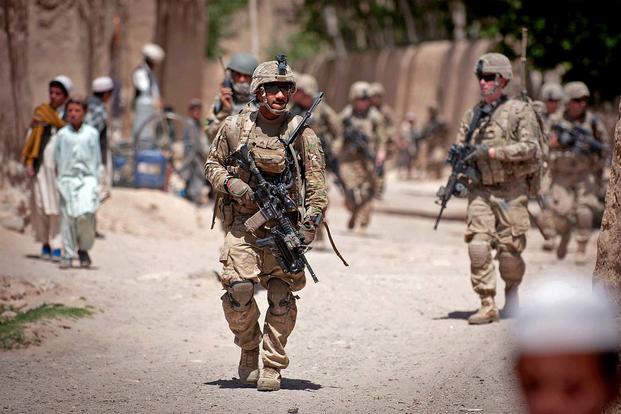The number of U.S. boots actually on the ground in Afghanistan, Iraq and Syria, and the number officially reported by the military have been two different things for years, the Pentagon acknowledged Wednesday.
The long-standing official number of U.S. troops in Afghanistan, or Force Management Level, has been 8,448, but Marine Lt. Gen. Frank McKenzie said for the first time that the actual number in Afghanistan is about 11,000.
"We're saying the number's 11,000 today, and we'll go up or down slightly based on the operational requirement," said McKenzie, director of the Pentagon's Joint Staff.
"That's the total forces that are in Afghanistan today. Should that number change, significantly, then we will come back in here to tell you," he said.
The Pentagon consistently has lowballed the troop count by not including those on so-called "temporary assignment" and overlaps in troop rotations.
"This way of doing business is over" at the direction of Defense Secretary Jim Mattis, said Dana White, the Pentagon's chief spokeswoman.
She said the change is being made in accordance with Mattis' overall demand for more transparency at the Defense Department.
A similar situation on troop numbers has long existed in Iraq and Syria, and McKenzie said that problem also is being addressed. "The same principles will apply," he said.
The discrepancies on the troop counts, which began under former President Barack Obama and continued into the Trump administration, often resulted in the official number being thousands of troops short of the actual troop strength.
McKenzie said the new emphasis on transparency would apply to additional troops to be sent to Afghanistan under the new strategy announced earlier this month in an address to the nation by President Donald Trump.
Army Gen. Joseph Votel, commander of U.S. Central Command, said at the time that the new troops would begin to deploy within days or weeks, but McKenzie said no additional troops have been sent as yet.
"No troops have started to flow. No deployment orders have been issued," McKenzie said of the reinforcements, which could reach as many as 3,900. "Should that number change significantly," he said, "we will come back in here to tell you that."
The gap between the public and actual numbers had long been an open secret. When asked about the discrepancies recently, Mattis told reporters traveling with him that "There's a very strange accounting procedure I inherited" on the Force Management Levels.
Mattis "inherited this accounting program," McKenzie said. His intention now was to "let the American people know what their sons and daughters are doing there, how many are there."
The Force Management Levels for Iraq have been given at about 5,200 while the number for Syria was about 500. As for the actual numbers of troops in Iraq and Syria, McKenzie said "those numbers will be out soon."
-- Richard Sisk can be reached at Richard.Sisk@Military.com.





























